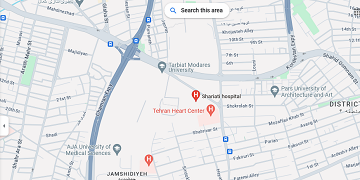Assessment of Low Level Laser Therapy Photobiomodulation Effects on Collagen I and Bone Morphogenegic Protein 2 Osteoblastic Biomarkers and Tartrate Resistant Acid Phosphatase and Cathepsin K Osteoclastic Biomarkers in Dexamethasone Treated Bone Tissue Blocks
Summary of the necessity of project implementation
Osteoporosis (osteoporosis) is the most common metabolic bone disease, in which the bone mass decreases and the tissue structure breaks down, which increases the risk of pain and bone fracture and deformity. Long-term use of corticosteroids (such as dexamethasone) can cause osteoporosis and is the most common secondary cause of osteoporosis. Current treatment methods such as the use of bisphosphonates can lead to irreversible side effects such as bone necrosis or osteomyelitis, so prevention of this disease is very important. Basically, it is the activity of bone cells that affects the bone structure. Osteoblasts produce bone tissue, while osteoclasts cause bone resorption. In a normal state, this bone production and resorption are in balance, but when this balance is disrupted, by inhibiting osteoblasts and reducing bone formation and stimulating osteoclasts and increasing bone resorption, the density and strength of bone tissue is reduced and the continuation of this situation can lead to osteoporosis. to be These cells have specific biomarkers that show their activity, for example, Collagen I and Bone Morphogenetic Protein 2 are osteoblastic markers, and Tartrate-Resistant Acid Phosphatase and Cathepsin K are osteoclastic markers, and the level of markers in the tissue can tell the level of activity. osteoblast and osteoclast and the state of bone production and resorption. Considering the satisfactory effects of low-power laser therapy in various fields of tissue repair, including bone repair, in this study we intend to investigate its effect on osteoblastic and osteoclastic biomarkers in bone tissue samples treated with dexamethasone as a means to understand the molecular effects of low-power laser on bone and Check its production and analysis. Understanding the interaction between low-power laser and bone biomarkers in dexamethasone-treated bone tissue samples is essential to advance our knowledge of possible therapeutic interventions. These findings may contribute to the development of targeted approaches to prevent corticosteroid-induced osteoporosis, thereby leading to improvements in clinical interventions and improved patient outcomes. Also, this study can provide a scientific basis for future research on bone health and laser therapy.
Moderator: Dr. Sara Pourshahidi
Start year: 2024




Send to friends